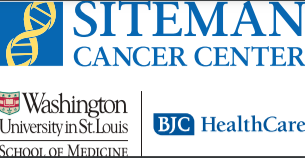- Advertise
- About OncLive
- Editorial Board
- MJH Life Sciences brands
- Contact Us
- Privacy
- Terms & Conditions
- Do Not Sell My Information
2 Clarke Drive
Suite 100
Cranbury, NJ 08512
© 2025 MJH Life Sciences™ and OncLive - Clinical Oncology News, Cancer Expert Insights. All rights reserved.
Motixafortide/G-CSF Results in 4.9-Fold Increase in Achieving Target Stem-Cell Mobilization for Transplant in Myeloma
The addition of motixafortide to granulocyte colony stimulating factor resulted in a 4.9-fold increase in achieving target stem-cell mobilization for autologous bone marrow transplantation in up to 2 apheresis sessions vs G-CSF alone in patients with multiple myeloma, meeting the primary end point of the phase 3 GENESIS trial.
The addition of motixafortide (BL-8040) to granulocyte colony stimulating factor (G-CSF) resulted in a 4.9-fold increase in achieving target stem-cell mobilization for autologous bone marrow transplantation in up to 2 apheresis sessions vs G-CSF alone in patients with multiple myeloma, meeting the primary end point of the phase 3 GENESIS trial (NCT03246529).1
Results indicated that 70.0% of those in the investigative arm vs 14.3% of those in the control arm experienced mobilization of 6 million or greater CD34+ cells/kg in up to 2 apheresis sessions, and after only 1 administration of motixafortide; this translated to a 54.6% difference between the arms (95% CI, 38.7%-69.5%; P <.0001) and an odds ratio (OR) of 12.9.
Moreover, a 14.1-fold increase in the proportion of patients on the motixafortide arm vs the G-CSF–alone arm experienced mobilization of 6 million or more CD34+ cells/kg in just 1 apheresis session, meeting a key secondary end point of the trial. In the investigative and control arms, these percentages were 67.5% and 4.8%, respectively, which translated to a difference of 61.7% (95% CI, 49.5%-73.8%; P <.0001) and an OR of 56.0.
“The results of the GENESIS study are extremely impressive, and all the more so when considering that almost 90% of the patients in the treatment arm proceeded to transplantation after only 1 apheresis session,” John DiPersio, MD, Washington University School of Medicine, and lead investigator of the study. “This is a great achievement in alleviating the burden for the patients and reducing hospital resources. I believe these results make the combination of motixafortide and G-CSF a very attractive candidate for use in all patients with multiple myeloma undergoing autologous stem-cell transplantation.”
The placebo-controlled, multicenter GENESIS trial was initiated in December 2017, and investigators are evaluating the safety, tolerability, and efficacy of motixafortide plus G-CSF vs G-CSF alone for the mobilization of hematopoietic stem cells for autologous transplantation in patients with multiple myeloma.
To be eligible for inclusion, patients needed to have histologically confirmed disease before enrollment, be candidates for transplant per investigator discretion, be in their first or second complete response or partial response, have an ECOG performance status of 0 to 1, and acceptable baseline 1organ function.2 Additionally, it must be at least 4 weeks since their last induction cycle of multiagent chemotherapy, with no chemotherapy monotherapy or maintenance given within 7 days.
If they had previously undergone autologous or allogeneic transplant, if previous cell collection has failed, if they had received more than 6 cycles of lifetime exposure to lenalidomide (Revlimid), more than 2 cycles of any alkylating agent combination regimens, or previous treatment with radioimmunotherapy, they were excluded from the analysis.
The primary end point of the trial was to show that only 1 dose of motixafortide in combination with G-CSF has superiority over G-CSF alone in the ability to mobilize 6 million or more CD34+ cells in up to 2 apheresis sessions. Investigators also examined time to engraftment of neutrophils and platelets, as well as the durability of engraftment, among other criteria.
To identify CD34+ cell yields, investigators utilized both local and central laboratories, and efficacy objectives were calculated by using the percentage of CD34+ cells identified by the central laboratory. The values from the local laboratory were utilized for all clinical decisions made, including the number of apheresis days and determining whether to proceed to transplant.
Additional findings indicated that the median number of CD34+ cells that were gathered on the first day of apheresis was 8.5 million in the motixafortide combination arm and 1.5 million in the G-CSF–alone arm, which translated to a 5.6-fold increase. Moreover, the addition of this agent to the standard of care permitted the majority, or 88.3%, of patients on the investigative arm to go to transplant after 1 apheresis session vs just 10.8% of those on the control arm.
Investigators also shared that the number of days needed for engraftment, success of engraftment, and the durability of engraftment at 100 days after transplant, all supported the novel combination.
“These strikingly positive data significantly exceeded our expectations, and are truly transformational for our company,” Philip Serlin, chief executive officer of BioLineRx, added in the release. “The statistical significance across all primary and secondary end points was consistent across 12 different sensitivity analyses. These results support our goal of becoming the standard of care for autologous bone marrow transplantation, providing a strong clinical and pharmacoeconomic advantage for its use, on top of G-CSF, in all transplant procedures.”
References
- BioLineRx announces positive top-line results from GENESIS phase 3 trial of motixafortide in stem cell mobilization for autologous bone marrow transplantation in multiple myeloma patients. News release. BioLineRx Ltd. May 4, 2021. Accessed May 4, 2021. https://bit.ly/3eh5eVj
- A phase III, safety, tolerability and efficacy of combination treatment of BL-8040 and G-GSF as compared to placebo and G-CSF for the mobilization of hematopoietic stem cells for autologous transplantation in subjects with MM (GENESIS). ClinicalTrials.gov. Updated January 19, 2018. Accessed May 4, 2021. https://clinicaltrials.gov/ct2/show/NCT03246529


